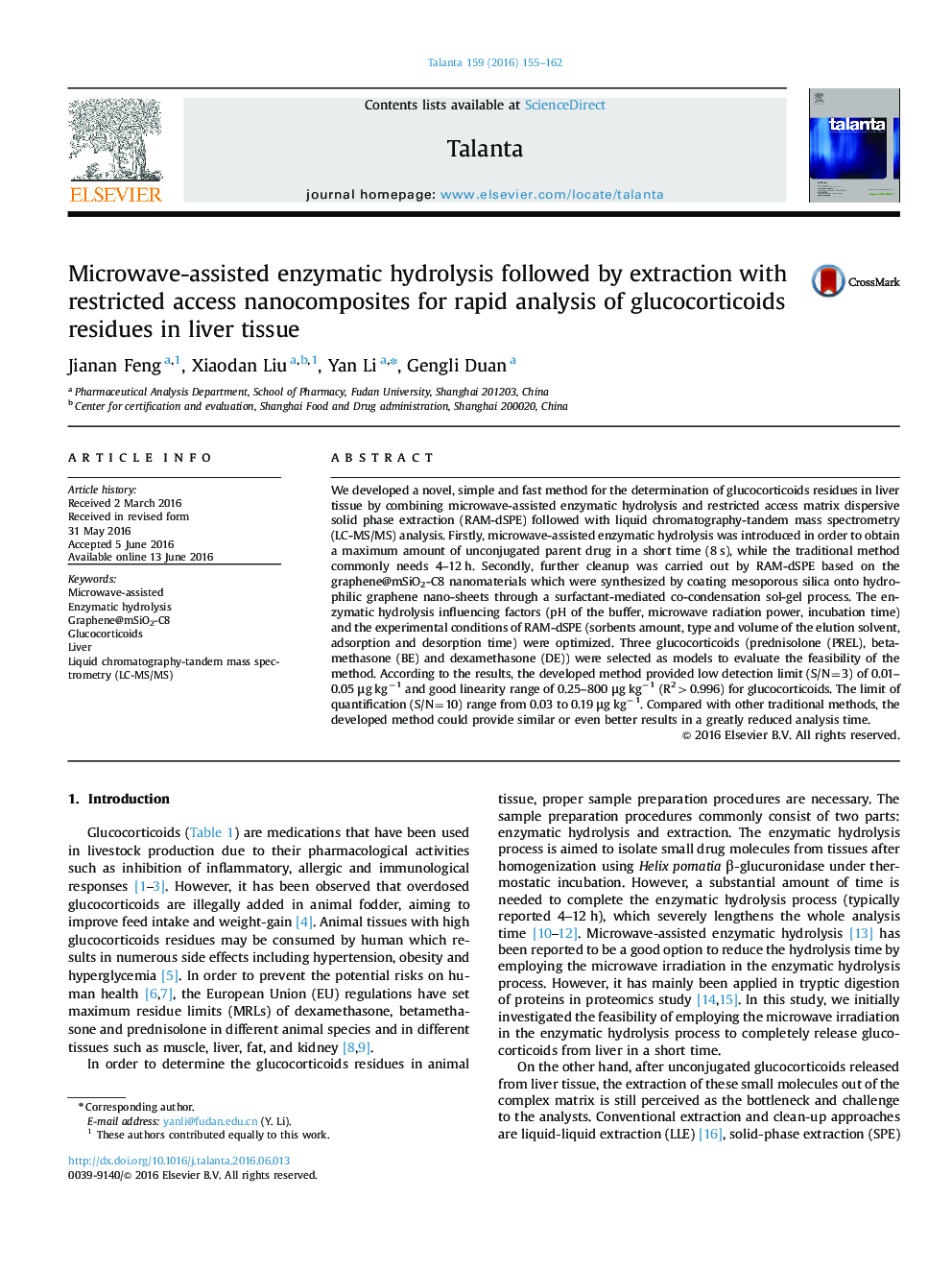| Article ID | Journal | Published Year | Pages | File Type |
|---|---|---|---|---|
| 1241760 | Talanta | 2016 | 8 Pages |
•Microwave-assisted enzymatic hydrolysis and RAM-SPE were combined.•C8-functionalized hydrophobic interior pore-walls for extraction of glucocorticoids.•Different enzymatic hydrolysis influencing factors were optimized.•Different extraction conditions were optimized.
We developed a novel, simple and fast method for the determination of glucocorticoids residues in liver tissue by combining microwave-assisted enzymatic hydrolysis and restricted access matrix dispersive solid phase extraction (RAM-dSPE) followed with liquid chromatography-tandem mass spectrometry (LC-MS/MS) analysis. Firstly, microwave-assisted enzymatic hydrolysis was introduced in order to obtain a maximum amount of unconjugated parent drug in a short time (8 s), while the traditional method commonly needs 4–12 h. Secondly, further cleanup was carried out by RAM-dSPE based on the graphene@mSiO2-C8 nanomaterials which were synthesized by coating mesoporous silica onto hydrophilic graphene nano-sheets through a surfactant-mediated co-condensation sol-gel process. The enzymatic hydrolysis influencing factors (pH of the buffer, microwave radiation power, incubation time) and the experimental conditions of RAM-dSPE (sorbents amount, type and volume of the elution solvent, adsorption and desorption time) were optimized. Three glucocorticoids (prednisolone (PREL), betamethasone (BE) and dexamethasone (DE)) were selected as models to evaluate the feasibility of the method. According to the results, the developed method provided low detection limit (S/N=3) of 0.01–0.05 μg kg−1 and good linearity range of 0.25–800 μg kg−1 (R2>0.996) for glucocorticoids. The limit of quantification (S/N=10) range from 0.03 to 0.19 μg kg−1. Compared with other traditional methods, the developed method could provide similar or even better results in a greatly reduced analysis time.
Graphical abstractFigure optionsDownload full-size imageDownload as PowerPoint slide
